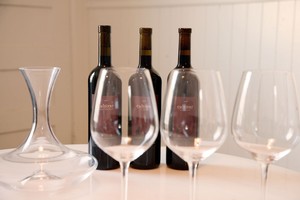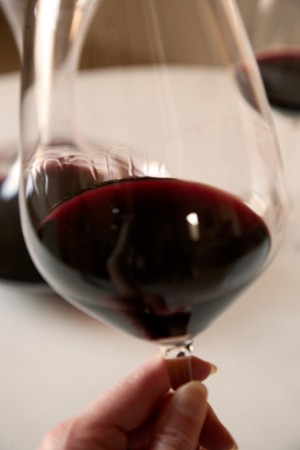How to Host a Horizontal Wine Tasting
We love a good celebration, and just because the holidays are over doesn’t mean the toasting has to stop. Keep the toasting going past the holidays and create a new tradition: a late January tasting party.

And right now is the perfect time to explore three Napa Valley Appellations through a horizontal wine tasting. We have three 2012 Cabernet Sauvignons available: 2012 Cultivar Rutherford Cabernet Sauvignon, 2012 St. Helena Cabernet Sauvignon, and 2012 Cultivar Howell Mountain Cabernet Sauvignon.
Wondering what is a horizontal wine tasting? It’s when you select one varietal for a tasting of the same vintage from different appellations. This is a great introduction to the nuances imparted into the wines by the land.
Getting Ready
Before the tasting, decant all of the wines you’ve chosen. We recommend about an hour to two hours for our St. Helena and Rutherford and just a touch longer for our Howell Mountain.
While the wines are decanting, set out three glasses per person (eighteen for a party of six people) that way everyone can compare the color of the wines as well as the legs before tasting. Be sure to mark the wine glasses ahead of time with color-coordinated Washi tape or letterpress coasters.
Once the wines are decanted, pour at least four ounces of each wine into everyone’s glasses. Be careful not to overfill the wine glasses. You want everyone to be able to easily swirl the wine without fear of it splashing out of the glass. Swirling doesn’t just look cool. It serves a purpose: swirling releases the aromas and coats the glass with them. Let the wines breathe for a few minutes before inviting guests to begin.
Tasting Your Wines
Once your guests are seated and have their wines in front of them it’s time to begin tasting. Lead them through the steps for sampling the first wine. The following steps are conveniently included this tasting sheet that you can download and print for your guests.
As the host, you can decide whether you want to share the appellations ahead of time or have your guests guess. Our tasting sheet has general notes for tasting wines on the front and tasting notes for each of our 2012 Cabernet Sauvignons on the back. If your guests are Napa Valley Cabernet Sauvignon aficionados, testing how well they know their appellations can be fun. Simply print the tasting sheet on two pages and hand out the tasting notes after all guests have noted their picks.
Hold Up Your Glass and Look
When you first look at your glass note whether the wine is clear and bright. It should be. Is the color light? Medium? or Dark and opaque? Look at the wines next to each other and record any differences you see.
Swirl Your Wine and Look at the Legs
It’s often said that you can tell a good wine by the thickness of its legs (the drips or tears that run down the inside of your wine glass after you swirl it). This is a myth, but the legs do reveal properties of your wine. Thick, slow moving legs mean your wine is heavy in alcohol and body. It will probably taste full and very rich. Delicate wines with less alcohol will have harder to see legs.

Swirl each wine and compare the legs of each. Record any differences you see on your tasting sheet.
Hold Up Your Glass and Smell
Swirl your wine to coat your glass with the aromas of your wine and hold up your glass to your nose. You’re looking for notes that will reveal where your wine came from. Some appellations are known for sour red-cherry notes where others are known for black currants. With complex wines you may not smell all the nuances in your first whiff.
There are 88 common aromas. On the provided tasting sheet we’ve identified eight common types of aromas: floral, spicy, fruity, vegetative, nutty, caramelized, woody, and earthy. An aroma wheel may help your guests identify what they’re smelling.
Taste and Ponder
Now the part you’ve been waiting for: the taste! As you sip and swish the wine in your mouth you’re looking at its acidity: is it tart or acidic? Is it interesting? If you ponder a wine trying to discern what you’re tasting it’s a sign of a complex wine.
What’s the finish like? Is it long or short? Elegant or harsh. Do you want more after you finish your sip?
Be sure to clear your palate in between each wine. In addition to lots of water, wine crackers are great to have on hand. Because they’re flat, they don’t impart any flavor to your next taste.
Ordering Your Wines
For six people, we like to have three bottles of each of the wines we’re pouring. For a horizontal tasting of all three of our 2012 Cabernet Sauvignon, that’s nine bottles total. This gives everyone enough wine to sample as well as being able to enjoy their preferred wine with the meal.
Remember that you receive 15% off wines when you order 12 or more bottles. So if a horizontal tasting sounds appealing, stock up and take advantage of the savings.


